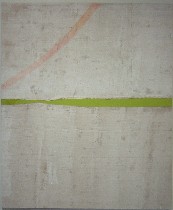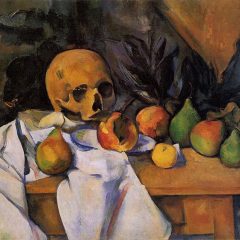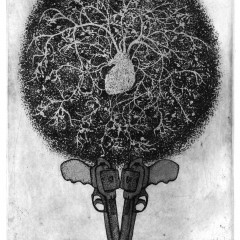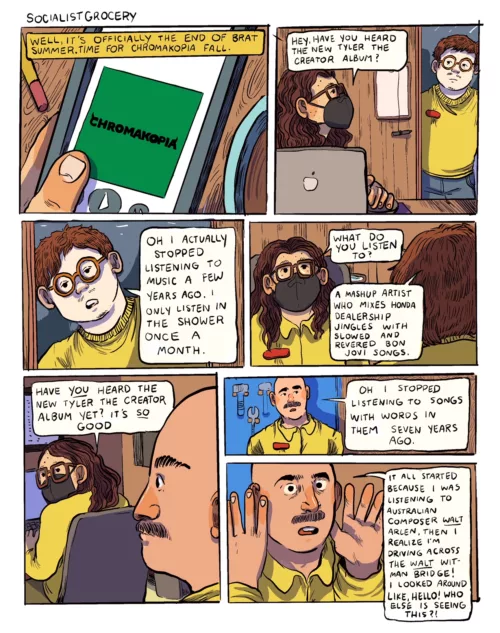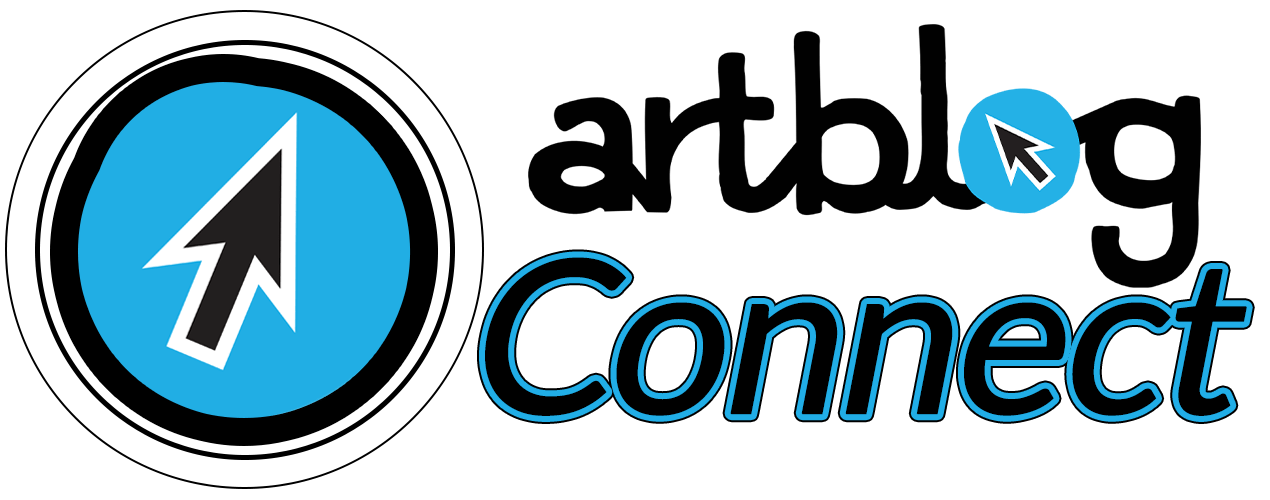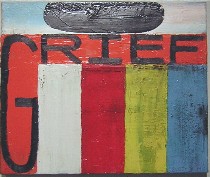 Every mark we make is somewhere in space, somewhere on a surface, and that seems to be the question behind “Field Questions,” a show at Rosenwald-Wolf Gallery.
Every mark we make is somewhere in space, somewhere on a surface, and that seems to be the question behind “Field Questions,” a show at Rosenwald-Wolf Gallery.
I was led a little astray by the gallery notes, in which curator Sid Sachs wondered about the relevance of abstract field painting in a world of war and tsunamis. It seems to me a red herring. These abstract field paintings do not speak directly to war or disaster.
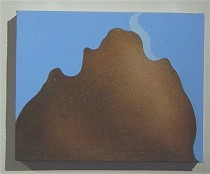 What they speak to are the issues of being alive (in states of war, peace, disaster, joy, misery, belief, doubt and cynicism) and humanity’s place in the world.
What they speak to are the issues of being alive (in states of war, peace, disaster, joy, misery, belief, doubt and cynicism) and humanity’s place in the world.
To put it another way, what struck me about these works were their Existentialism, the artists’ decisions to make marks of specific kinds that serve as metaphors for the human condition.
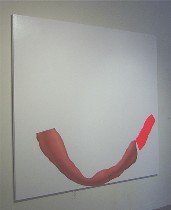 I had my favorites in the show–Aaron Williams body bits and other painterly, modeled illusions floating in a flat, flat field of blue or white. What I loved about these body bits were they seemed to be copies of cut-outs from photos of nudes, with their hard, curvy edges. The forms were an affirmation of existence and an affirmation of paint against paint (image right above, “Barely,” and left, “Flag”).
I had my favorites in the show–Aaron Williams body bits and other painterly, modeled illusions floating in a flat, flat field of blue or white. What I loved about these body bits were they seemed to be copies of cut-outs from photos of nudes, with their hard, curvy edges. The forms were an affirmation of existence and an affirmation of paint against paint (image right above, “Barely,” and left, “Flag”).
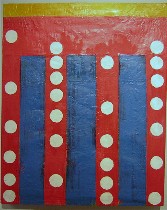 I also was mad for Chris Martin’s poignant paintings at once geometric and map like and architectural, the round circles reminding me of Pac-Man, each a human searching for a path on this earth and beyond the green door. Martin covers the space with bars and holes, limits and escapes (right, “No Title,” and top of post, “Goodbye Mother”).
I also was mad for Chris Martin’s poignant paintings at once geometric and map like and architectural, the round circles reminding me of Pac-Man, each a human searching for a path on this earth and beyond the green door. Martin covers the space with bars and holes, limits and escapes (right, “No Title,” and top of post, “Goodbye Mother”).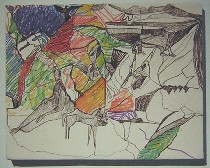 Tyler Professor of Painting Dona Nelson makes pieces read like challenges to representational art and its safe conventions. Her modeled surfaces barely escape being totally disgusting, yet end up affirming some kind of control that is her own. “Rest” (image left), magic marker on canvas, is drawn like a puzzle without the art-school lessons of perspective and modeling, the planes evoking cubism with an anti-elegance that charmed me.
Tyler Professor of Painting Dona Nelson makes pieces read like challenges to representational art and its safe conventions. Her modeled surfaces barely escape being totally disgusting, yet end up affirming some kind of control that is her own. “Rest” (image left), magic marker on canvas, is drawn like a puzzle without the art-school lessons of perspective and modeling, the planes evoking cubism with an anti-elegance that charmed me.
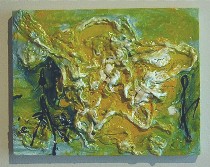 “Untitled” (image right) and “Painting for Malcolm” are gloppy reliefs tamed by color– anti-landscapes, anti-portraits, anti-paintings, anti-canvases. According to the gallery notes, “her works involve an automatism that is this side of outsider Surrealism.” Sounds good to me.
“Untitled” (image right) and “Painting for Malcolm” are gloppy reliefs tamed by color– anti-landscapes, anti-portraits, anti-paintings, anti-canvases. According to the gallery notes, “her works involve an automatism that is this side of outsider Surrealism.” Sounds good to me.
Others in the show were:
Harriet Korman, whose “Untitled” (below) offers a dizzying space via wedges of intense color that form a landscape or a streetscape that challenges invaders of the human kind;
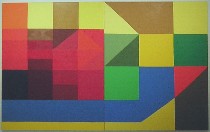
Carl Ostendarp, who offers a relatively small-voiced squiggle of fuschia in the corner of a giant landscape-oriented field of spring green (image, “Untitled,” below);
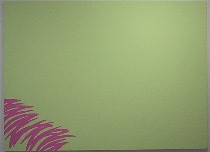
Ron Gorchov, whose painting, “Iris” (below), on a torso-shaped canvas is an affirmation of the body’s central position in any declaration of existence;
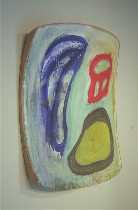
and Joe Fyfe, whose thinly painted gestures on rough burlap surfaces offer a contrast of sensibilities and material that surprise. I especially liked his “For Steve” (below), which struck me as a Barnett Newman zip painting, the green wavery landscape line/zip offering a promise that stands in contrast to the thin orange gesture–a human peach color, perhaps–barely contained by the painting.
